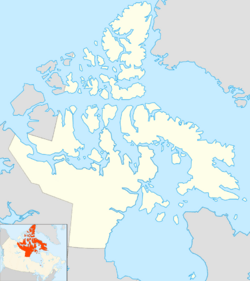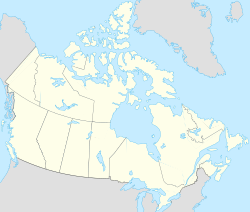Harrison Islands facts for kids
| Geography | |
|---|---|
| Location | Gulf of Boothia |
| Coordinates | 69°20′N 090°30′W / 69.333°N 90.500°W |
| Archipelago | Canadian Arctic Archipelago |
| Area | 305 km2 (118 sq mi) |
| Administration | |
| Territory | Nunavut |
| Region | Kitikmeot |
| Demographics | |
| Population | Uninhabited |
The Harrison Islands are a group of islands found in the far north of Canada. They are part of the Canadian Arctic Archipelago, which is a huge collection of islands in the Arctic Ocean. These islands are located in Nunavut, Canada's largest and newest territory.
The Harrison Islands are specifically found in the western part of the Gulf of Boothia. This gulf is a large body of water that connects to the Arctic Ocean. The islands are also near a place called Pelly Bay, and they are east of the Ross Peninsula.
Because of their location, the Harrison Islands are north of the Arctic Circle. This means they experience very long days in summer and very long nights in winter. They are south of the Queen Elizabeth Islands and southeast of the Astronomical Society Islands, which are other island groups in the Canadian Arctic.
Contents
Where are the Harrison Islands?
The Harrison Islands are in a very remote part of the world. They are part of the Canadian Arctic Archipelago, a vast area of islands in northern Canada. This archipelago includes thousands of islands, many of which are covered in ice and snow for most of the year.
Nunavut is a massive territory in Canada. It covers a huge part of the Canadian Arctic. The Harrison Islands are located within the Kitikmeot Region of Nunavut. This region is known for its rugged landscapes and cold climate.
Near the Arctic Circle
The Arctic Circle is an imaginary line around the Earth. Everything north of this line experiences polar days and nights. The Harrison Islands are located north of this circle, meaning they have unique daylight patterns. In summer, the sun might not set for weeks, while in winter, it might not rise for weeks.
What is the Arctic like?
The Arctic is one of the coldest places on Earth. It is characterized by its icy landscapes, frozen seas, and very cold temperatures. Even in summer, the temperatures are often cool, and ice can still be found.
Uninhabited Islands
The Harrison Islands are currently uninhabited. This means no people live there permanently. Many islands in the Canadian Arctic are uninhabited because of the harsh climate and difficult living conditions. The land is often barren, with little vegetation, and it is very hard to find food and shelter.
Arctic Environment
The environment around the Harrison Islands is typical of the High Arctic. It features tundra landscapes, which are flat, treeless plains. The ground is often frozen solid, known as permafrost, for most of the year. This makes it difficult for large plants like trees to grow.
Wildlife in the Arctic Region
Even though the Harrison Islands are uninhabited by humans, the surrounding Arctic region is home to many amazing animals. These animals have special adaptations that help them survive in the cold.
Arctic Animals
Animals like polar bears, seals, and walruses live in the Arctic. They are well-suited to the cold climate and often rely on the sea ice for hunting and resting. Birds also migrate to the Arctic during the warmer months to nest and raise their young.
Plant Life in the Arctic
Plant life in the Arctic is mostly made up of small, hardy plants. These include mosses, lichens, and small shrubs. They grow close to the ground to stay warm and are able to survive in the short, cool summers.



